Signature Dishes in Buan
The information below is from the Buan Culture & Tourism website. For more information, please visit the website.
-
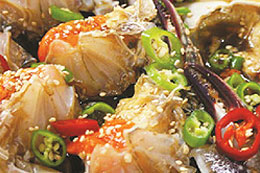
Kkotgejang (Blue Crab Marinated in Soy Sauce)
Crab is low in fat and high in protein. Easy to digest, it has a clean taste. Rich in amino acids, it makes the best nutritional food for children and seniors. The sea off the coast of Buan is famous for large blue crab habitats. The taste of blue female crabs with roe marinated in soy sauce defies description.
-
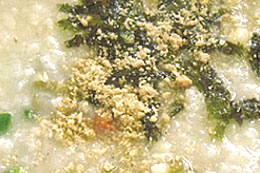
Baekhapjuk (White Shell Porridge)
Crabs from Buan, the center of the west coast, were offered to the monarch during the Joseon Dynasty. With more than 30 nutrients and a large amount of iron, they help relieve anemia among women as well as cure hangover. The crabs served in various ways - raw, steamed, or grilled are extremely popular. Baekhapjuk in the area distinguishes itself for its uniquely deep taste.
-
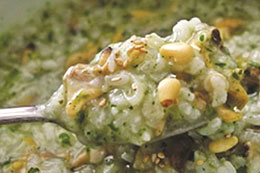
Ppongip Bajirakjuk (Littleneck Clam Porridge with Mulberry Leaves)
Buan-gun with a 99km-long coast has long been famous for littleneck clams from its clean waters; The clams from the Byeonsan Peninsula do not need the sediment removal process. They boast quality meat. The dish uses fresh vegetables, Buan rice and mulberry leaves rich in amino acids, calcium, and iron, among others. It is popular for its distinctly clean taste as well as its rich nutrition.
-
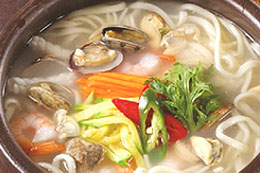
Bajirak Kalguksu (Knife-Cut Noodle Soup with Clams)
Rich in iron and vitamins B1 and B2, the clams from this area are good for preventing anemia. They are cooked in various ways like soup, salad, porridge, and hand-made noodles for which plump clams from the Byeonsan Peninsula are especially popular for the harmony of refreshing and spicy tastes. While in Buan, be sure to relish the local delicacy.
-
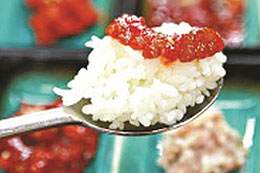
Gomso Table d’hote with Salted Seafood
Gomso Bay boasts a Korean table d’hote featuring 14-16 kinds of salted seafood which do not taste as salty as they might sound. Served with freshly cooked rice, the dish delivers the taste of mom’s cooking. You will find a bowl of rice not enough to relish the diversity of all the salted seafood on the table.
-
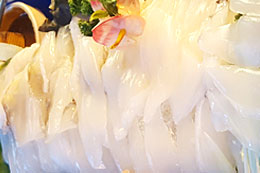
Gapojingeo (Cuttlefish)
From April to May, the region produces quality cuttlefish which fishermen catch with fish traps installed on rocky seabed. The low-calorie fish is popular as diet food. Its clean taste is exceptional. It is quite rich however in nutrients such as protein, calcium, and potassium as well as vitamin E. It can be served in a variety of ways including raw or fried delicacies.
-
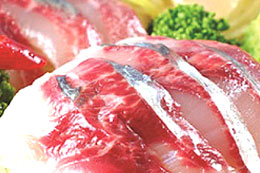
Seolsungeohwe (Snow Gray Mullet Raw Fish Dish)
Snow gray mullet is the most delicious following the first snowfall of the year. The fish from the clean waters of the Chilsan fishing grounds are highly regarded among gourmets for their creamy yet light taste. Buan-gun holds the Snow Gray Mullet Festival every year with diverse programs numerous tourists find delightful.
-
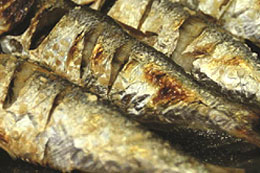
Jeoneo (Gizzard Shad)
Eaten entirely including its bones, jeoneo is a traditional delicacy of the fall, as Koreans fond of saying, “Even a runaway daughter-in-law returns because of the smell of grilling gizzard shad.” With a large amount of calcium, vitamins, and unsaturated fatty acids, the fish boasts a mild yet delicate flavor. You can eat it raw, but grilling is favored cooking method.
-
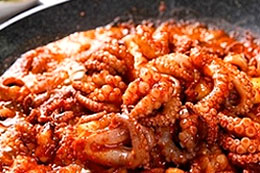
Jjukkumi (Small Octopus)
Freshly caught off the Byeonsan Peninsula, jjukkumi is popular as a raw or hot-pot dish.Tourists pour in during the fertilization season that falls in April-May. Jjukkumi is famous for its abundance of the taurine amid acid. Enjoy the delicacy and boost your energy to deal with a challenging time you might be faced with.
Visit the Buan Culture & Tourism Website and find more tourist information about Buan, a natural treasure.








